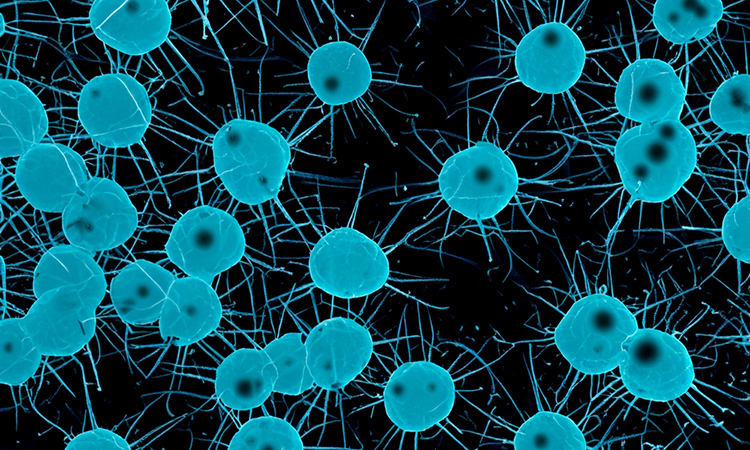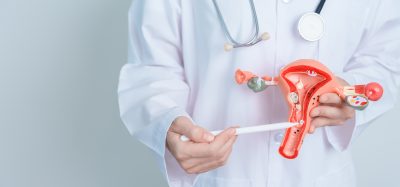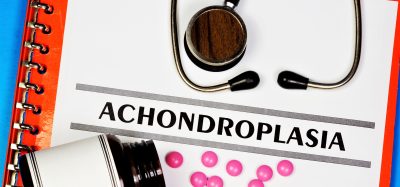Drug helps reduce bacterial antibiotic resistance
Posted: 26 June 2023 | Izzy Wood (Drug Target Review) | No comments yet
US researchers uncover a new drug that reduces the ability of bacteria to develop antibiotic resistance, prolonging the antibiotic effectiveness.


A team of researchers at Baylor College of Medicine, US, is gaining ground in their search for solutions to the global problem of bacterial antibiotic resistance, which was responsible for nearly 1.3 million deaths in 2019.
The team reports in the journal Science Advances a drug that, in laboratory cultures and animal models, significantly reduces the ability of bacteria to develop antibiotic resistance, which might prolong antibiotic effectiveness. The drug, called dequalinium chloride (DEQ), is a proof-of-concept for evolution-slowing drugs.
“Most people with bacterial infections get better after completing antibiotic treatment, but there are also many cases in which people decline because the bacteria develop resistance to the antibiotic, which then can no longer kill the bacteria,” said corresponding author Dr Susan M Rosenberg, Professor of Molecular and Genetics, Biochemistry and Molecular Biology and Molecular Virology and Microbiology at Baylor.
In this study, Rosenberg and her colleagues looked for drugs that could prevent or slow down E. coli bacteria from developing resistance to two antibiotics when exposed to a third antibiotic, ciprofloxacin (cipro), the second most prescribed antibiotic in the US and one associated with high bacterial resistance rates.
The resistance is caused by new gene mutations that occur in the bacteria during infection. The drug DEQ reduces the speed at which new mutations are formed in bacteria, the team finds.
Previous work from the Rosenberg lab had shown that bacterial cultures in the lab exposed to cipro turn up mutation rate. They found a mutational “programme” that is switched on by bacterial stress responses. Stress responses are genetic programmes that instruct cells to increase production of protective molecules during stress, including stress from low concentrations of cipro. Low concentrations occur at the beginning and end of antibiotic therapies and if doses are missed.
The same stress responses also increase the ability to make genetic mutations, the Rosenberg group, then many other labs, have shown. Some of the mutations can confer resistance to cipro, while other mutations can allow resistance to antibiotics not yet encountered. Mutation-generating processes that are turned on by stress responses are called stress-induced mutation mechanisms.
Bacteria with antibiotic resistance mutations can then sustain an infection in the presence of cipro. This study is the first to show that in animal infections treated with cipro, the bacteria activate a known stress-induced genetic mutational process. Cipro resistance occurs mostly by the bacteria developing new mutations, both clinically and in the laboratory, rather than by acquiring genes that confer antibiotic resistance from other bacteria.
Looking to prevent the development of antibiotic resistance, the researchers screened 1,120 drugs approved for human use for their ability to dial down the master bacterial stress response, which they showed counters the emergence of resistance mutations. In addition, and counterintuitively, they wanted “stealth” drugs that would not slow bacterial proliferation, which would confer a growth advantage to any bacterial mutants that resist the mutation-slowing drug itself. That is, drugs that are not antibiotics themselves.
“We found that DEQ fulfilled both requirements. Given together with cipro, DEQ reduced the development of mutations that confer antibiotic resistance, both in laboratory cultures and in animal models of infection, and bacteria did not develop resistance to DEQ,” concluded first author Yin Zhai, a postdoctoral associate in the Rosenberg lab. “In addition, we achieved this mutation-slowing effect at low DEQ concentrations, which is promising for patients. Future clinical trials are needed to evaluate the ability of DEQ to decelerate bacterial antibiotic resistance in patients.”
Related topics
Animal Models, Antibiotics, Cell Cultures
Related organisations
Baylor College of Medicine
Related people
Dr Susan M Rosenberg, Yin Zhai








